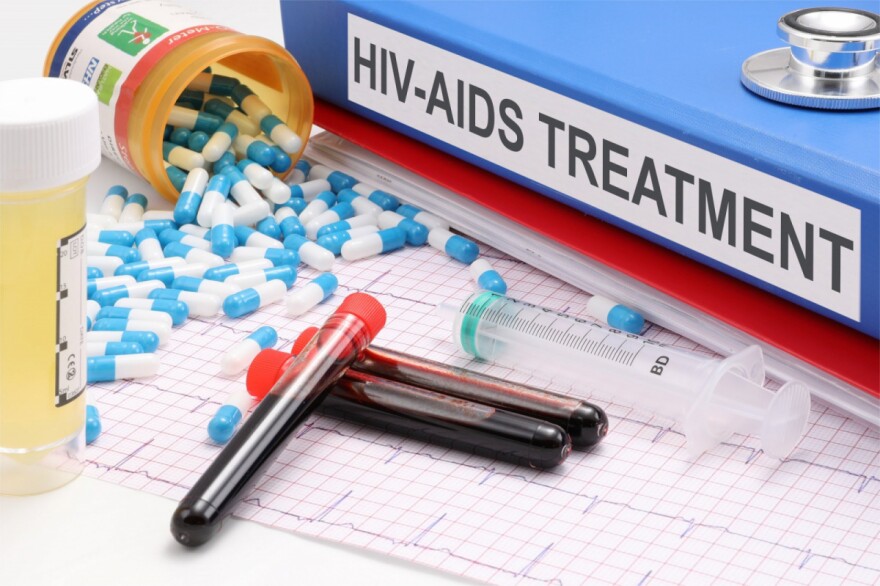|
Getting your Trinity Audio player ready...
|
By Henry Owino
Nairobi, Kenya: Fear, shock, confusion, and anxiety are some of the status traumatizing people living with HIV and AIDS (PLHIV/AIDS) in Africa following the halt of international aid meant to support the HIV/AIDS healthcare programs.
The United States’ implementation to cut foreign aid programs, including those that fund HIV/AIDS programs in Africa, has potentially led to shortages of life-saving anti-retroviral (ARV) drugs and impacted millions of people.
The cuts have prompted warnings from the World Health Organization (WHO) and other organizations about a potential setback in the fight against HIV/AIDS, with some predicting increased deaths and new infections.
This follows US President Donald Trump’s declaration to halt foreign aid support for an initial duration of 90 days in line with his “America First” foreign policy. The announcement made by Trump on their very first day in office in January 2025, shocked the world, especially Africa’s continent where the majority heavily relies on the US Agency for International Development’s (USAID) programs.
Though Trump argued the freeze was part of a review into US government spending, it has since affected health programs around the world. Currently, there are no shipments of critical medical supplies, including HIV drugs, popularly known as ARV drugs.

As a result, many African countries have been greatly hampered by Trump’s executive order pausing foreign aid support for HIV patients’ treatment and management.
According to Tedros Adhanom Ghebreyesus, WHO President, eight countries six of them in Africa, are facing critical shortages of life-saving ARV medications for HIV treatment. Specifically; Nigeria, Kenya and Lesotho, South Sudan, Burkina Faso, Mali, Haiti, and Ukraine are experiencing shortages of HIV drugs.
Several countries are facing critical shortages of life-saving antiretroviral (ARV) medications for HIV treatment. Specifically, Nigeria, Kenya, Lesotho, South Sudan, Burkina Faso, Mali, Haiti, and Ukraine are experiencing shortages
“Disruptions to HIV programs could undo 20 years of progress,” Dr. Tedros, WHO Director-General cautioned. Adding, it could also lead to more than 10 million additional cases of HIV and three million HIV-related deaths, thus more than triple the number of deaths last year.”
The majority of the USAID programs are currently terminated. This is despite a waiver issued in February for the US’s ground-breaking HIV program, its work has been severely impacted.
Four Presidential Administrations Supported PEPFAR
The US President’s Emergency Plan for Aids Relief (PEPFAR), generally relies on logistical support from USAID and other organizations hit by the turmoil. With the American people’s generosity, the United States has saved over 26 million lives and prevented millions of HIV infections through PEPFAR.
Since PEPFAR’s inception in 2003, the US government has invested over $100 billion in the global HIV/AIDS response, saving over 26 million lives, preventing millions of HIV infections, and supporting several countries to achieve HIV epidemic control, all while significantly strengthening global health and economic security.
PEPFAR is the largest commitment by any nation to address a single disease in history, enabled by strong bipartisan support across ten US congresses and Four Presidential Administrations, and through the American people’s generosity. PEPFAR shows the power of what is possible through compassionate, cost-effective, accountable, and transparent American foreign assistance.
So, PEPFAR has enabled some of the world’s poorest people to access ARV drugs and has been credited with saving more than 26 million lives worldwide. Unfortunately, the Trump regime has led to the “immediate stop to services for HIV treatment, testing and prevention in more than 50 countries globally”, Dr Tedros said.
The impact and weight of new infections on individuals, communities, and healthcare systems, suggests a comprehensive assessment of the consequences, including social, economic, and health-related effects.
For instance, an estimated 1.3 million individuals worldwide acquired HIV in 2023, marking a 39 percent decline in new HIV infections since 2010 and a 60 percent decline since the peak in 1995.
Experts warns that global deaths from HIV/AIDS and new infections could soar to levels unseen since the start of the century if planned funding cuts to foreign aid are sustained, undermining years of progress, experts warn.
Evidence-Based Research
A study published in the journal The Lancet HIV estimates there could be 4.4 million to 10.8 million additional new HIV infections by 2030 in low- and middle-income countries and 770,000 to 2.9 million HIV-related deaths in children and adults.
Trump administration has severed support for humanitarian work worldwide by withdrawing the US from the World Health Organization and freezing funding for PEPFAR and USAID.
Other major international donors, such as the United Kingdom, France, Germany, and the Netherlands, which together with the US, account for over 90 percent of global aid, have also announced plans to implement significant cuts to foreign aid.
According to the researchers, collectively, it could lead to a 24 percent reduction in global international HIV funding by 2026.
“We will see it come back and we [will] see people dying the way we saw them in the 90s and in 2000s. Looking ahead, if other donor countries reduce funding, decades of progress to treat and prevent HIV could be unraveled,” Winnie Byanyima, UNAIDS Executive Director said.

Adding; It is imperative to secure sustainable financing and avoid a resurgence of the HIV epidemic which could have devastating consequences, not just in regions such as Sub-Saharan Africa, but globally,’’ she emphasized.
Historically, the US has been the largest contributor to the global HIV response, investing more than US$100 billion through the PEPFAR since it was established in 2003.
“However, cuts to PEPFAR and USAID-supported programs have already severely disrupted access to essential HIV services, including for antiretroviral therapy and HIV prevention and testing,” says Debra ten Brink of the Burnet Institute, Australia, co-lead author of the study.
Separately, the head of the UN agency coordinating the fight against HIV-AIDS warned that an additional 6.3 million people will die in the next four years unless support is reinstated. “This represents a “tenfold increase” from the 600,000 AIDS-related deaths recorded globally in 2023,” she said.
Byanyima also predicted an additional 8.7 million new infections, up from 1.3 million new infections globally in 2023.
The greatest impact would likely be in Sub-Saharan Africa and among vulnerable populations, including people who inject drugs, sex workers, men who have sex with men, and children, according to the researchers.
The researchers called for a multipronged approach to help offset the effects of sudden funding cuts and build long-term sustainability.














